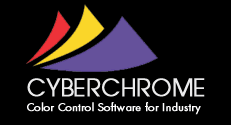
It all starts with the instrument you choose! The single most important element in communicating electronic color data is the spectrophotometer. You must use spectrophotometers; colorimeters ( by this I mean 3 filter tristimulus colorimeters) are not designed to be “absolute” instruments and are not suitable for sharing absolute color data, such as electronic color standards. They are designed to be “difference” meters. So using a spectrophotometer is essential to success!
When communicating electronic color data, you need to specify the make and model of the instrument. This defines the instrument geometry. Also, note that it’s not possible to mix sphere (d/8) geometry with 45/0 geometry. You can’t share absolute data between instruments that have different geometries. That means you can’t mix sphere geometry with 45/0 or 0/45 geometry. The instruments just read and handle the gloss of a color differently. One is not right and the other wrong; they are just different in the way they measure color and handle the specular reflectance or gloss.
While the higher end benchtop spectrophotometers provide the best precision and accuracy, many of today’s handheld or portable spectrophotometers are also well-suited to the task. Instruments from the same manufacturer tend to have better inter-instrument agreement than when mixing spectros from different manufacturers; and those within the same make and model from a manufacturer will yield the best inter-instrument agreement. So unless you are using instrument profiling, your best chance for getting instruments to agree on a color measurement is to stick with the same make and model. More on instrument profiling in Tip #4.
Instrumentation must be kept in tip-top condition. Your instrument should be monitored on a regular basis and standardized yearly. A daily green tile test is a good screening tool to verify that the instrument was calibrated properly and can catch any gross errors in the instrument performance. But the green tile test is not a guarantee that your instrument is reading all colors properly and can’t detect subtle changes in drift and aging. You should also do a monthly diagnostic test with an extended set of ceramic tiles. A future blog on Tip #5 in this series on “Monitoring Your Instrument Performance” will address this topic.
To summarize:
- Use a spectrophotometer, not a colorimeter
- You can’t mix sphere geometry with 45/0 or 0/45 geometry
- Use the same make and model of spectrophotometer
- Make sure the instruments are serviced annually
